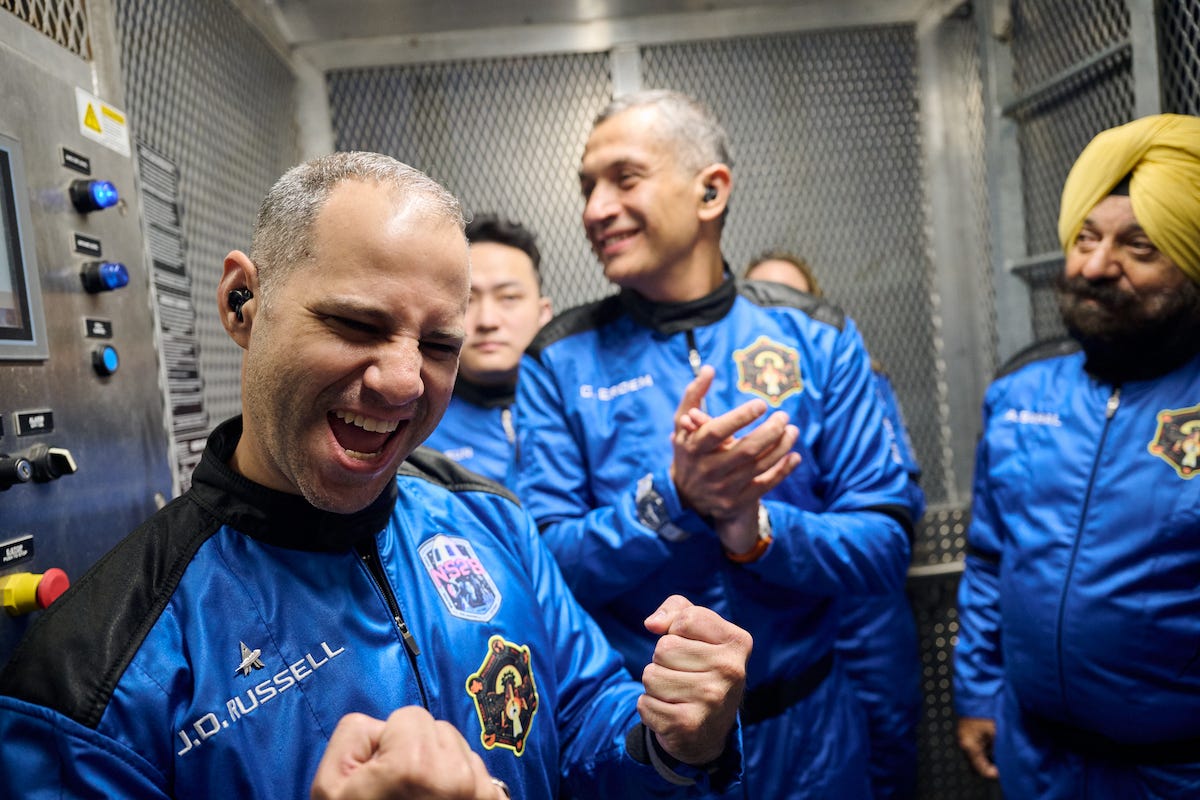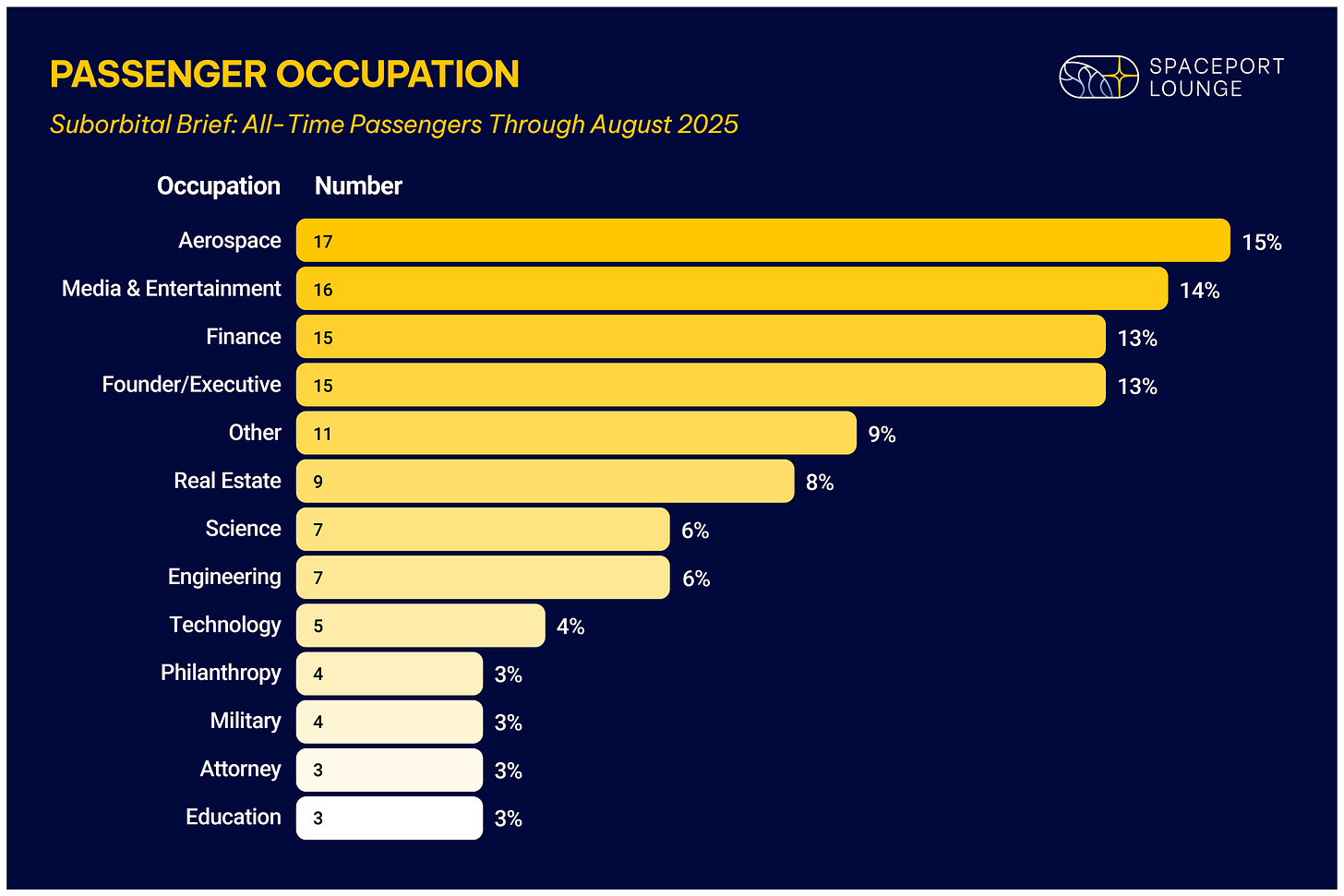Suborbital Space Passenger Insights
Aggregated Blue Origin and Virgin Galactic Passenger Demographics

For the first time, cumulative data on every passenger since the first commercial suborbital flight in 2021 reveals insights into this segment of the commercial space travel market, in exclusive analysis from Spaceport Lounge.
Market is a pivotal concept here, because while orbital commercial travel is still dominated by government agencies, suborbital passengers reflect mainly private market forces, providing an initial view of demand for independent space travel and tourism.
The data, segmented by occupation, funding source, and gender, shows who is flying, how providers allocate access, and how costs are shouldered across self-funders, sponsors, and giveaways.
Suborbital v. Orbital Space Travel
Suborbital space travel consists of brief flights to the edge of space. It takes about 10 minutes in a Blue Origin rocket-launched capsule reaching just beyond the Kármán Line at roughly 62 miles. The other option is about 60 minutes in a Virgin Galactic spaceplane climbing to the U.S. definition of space, at about 50 miles. In both cases, passengers experience a few minutes of weightlessness before returning to Earth.
In contrast, orbital commercial flights are multi-day missions, typically to the International Space Station or on custom orbital itineraries currently offered by SpaceX, Boeing, and Roscosmos. See our infographic on Space Travel Options for further details.
Suborbital Travel Evolution
Commercial suborbital travel has evolved into a repeatable excursion, with Blue Origin and Virgin Galactic accounting for all suborbital commercial passengers flown to date. The data in this report combines both operators and includes all of the 116 suborbital commercial passengers to date from July 2021 through September 2025.
Blue Origin is currently the only active operator and has increased its rocket and capsule fleet to enable nearly monthly missions. Virgin Galactic paused Unity spaceplane flights in 2024 to focus on production of its next-generation Delta-class spaceplanes, and is expected to resume service in 2026. The combined passenger data provides a demographic and behavioral snapshot of suborbital demand so far.



